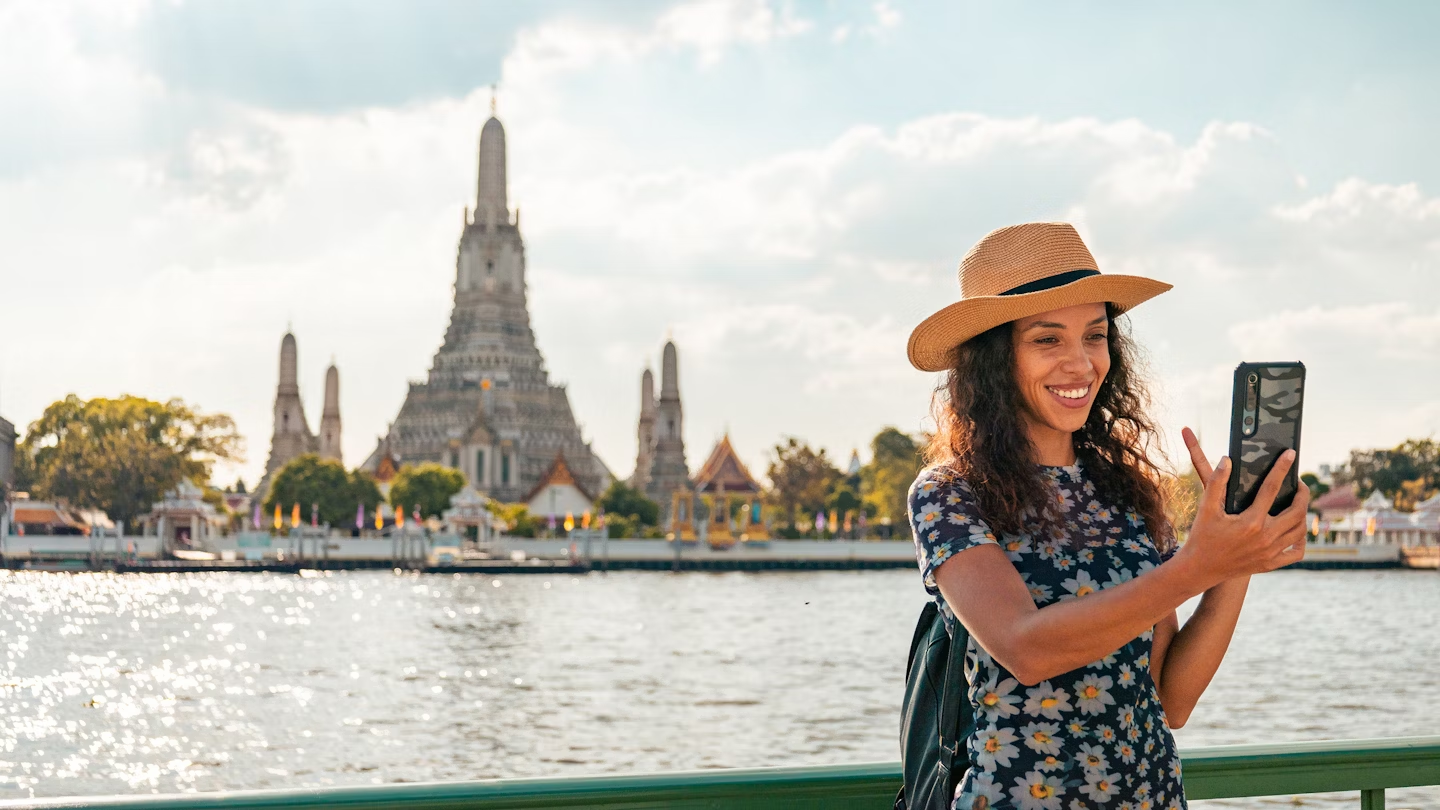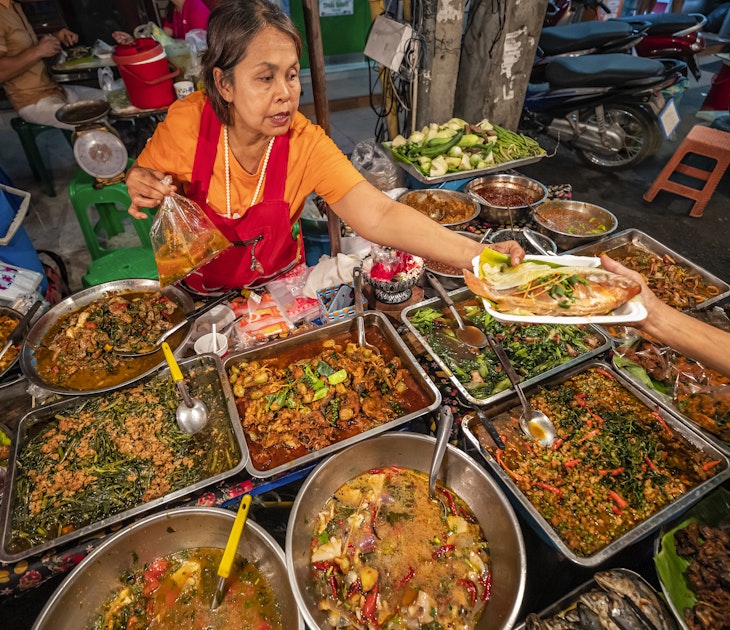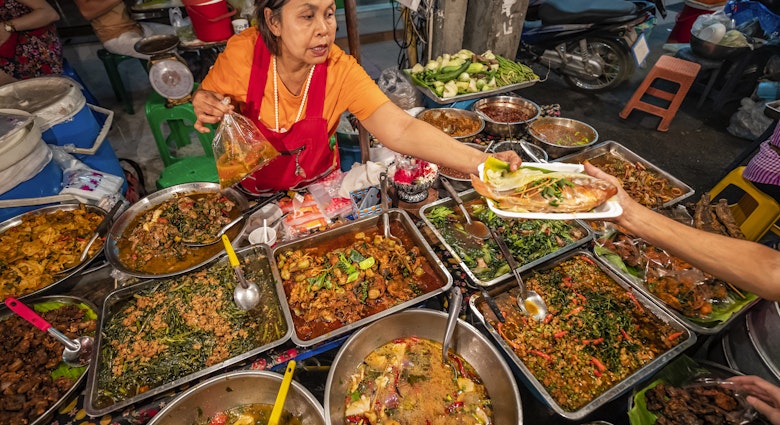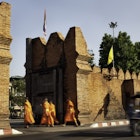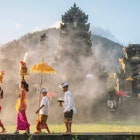Thailand is one of the world’s most popular tourist destinations and is widely accessible to all types of travelers.
Despite being known as a top backpacker destination as far back as your parents can remember, it still remains a must-visit for many. Best known for its pearl-white beaches, rich cultures and exquisite cuisine, it’s perfect for youthful soul-searchers, new family travelers and off-the-beaten-track adventurers alike.
Blissfully easy to navigate for first-timers, the country is wholeheartedly hospitable and boasts a culture that is open, welcoming and warm. And although this kind-spirit can sometimes feel a little too much to the uninitiated, the lengths Thai people will go to ensure you have a great time is astounding and should be welcomed at every opportunity. Anyone who has visited Thailand will tell you that it is through these interactions that the real Thailand reveals itself.
Warm temperatures year round promise a generous helping of vitamin D, while bountiful landscapes that stretch from pristine beaches to forested mountains give way to almost limitless experiences. You’ll be hard pressed to find a better tropical paradise for your next sun-filled adventure.
So, get ready to pack your bags with the answers to these questions that every first-time visitor to Thailand is asking.

When should I go to Thailand?
Ask any local and they’ll say the best time to visit Thailand is the “winter months” of November to February, but with warm temperatures throughout the year you’ll be hard pressed to find a time not worth visiting.
Thanks to post-monsoon winds cutting down humidity and lowering temperatures a few degrees, these months are technically the coolest, but that is objective when you’re in the tropics. This season pairs well with the New Year holiday season so expect busy crowds of both Thais and foreigners during these times.
The summer that follows is equally dry but significantly hotter. By April, the country is at its hottest (temperatures reaching north of 104°F/40°C) so fewer Thais venture out, leaving the sun-scorched tourism to those that don't know better. If you visit during this time, be sure to time a trip with Songkran, Thailand’s three-day New Year that is celebrated by way of a nationwide water fight in mid- to late-April. Every village, town and city gets involved, often producing so much evaporated water that it kick-starts some hefty pre-rainy season storms.
The rainy, or monsoon, season usually arrives by late June and continues through to October. At the start, the rains are heavy but more inconsistent. Towards the end, rainfall is easier to predict with week-long grey skies a real possibility. Temperatures stay warm so you don’t need to layer up, but if you’re visiting the islands, beware of rough seas and cancelled ferries that can spell disaster for tight itineraries.
Also worth noting is the increasingly problematic “smokey season”, where slash-and-burn agriculture blankets the North of Thailand (Chiang Mai, Pai, Sukhothai, Chiang Rai) in toxic smoke between January and March that ruins both the views and your lungs.
How much time do I need to explore Thailand?
It can be easy to feel overwhelmed when first visiting Thailand, jam-packing itineraries with every city and every experience you can. As a first-time traveler, ask yourself what you want to go to Thailand to experience and build your trip around that. With so much on offer and vastly different landscapes depending on where you head, Thailand can be enjoyed over days in the same way it can be enjoyed over months.
If it's beaches you’re looking for, head south to Phuket, Krabi or one of the islands in the Bay of Thailand and look towards the mainland for extra things to do. If it's the culture you’re more into, stay a while in Bangkok before heading north to Chiang Mai and come face to face with thousand-year-old temples and ancient forests.
If there’s one piece of advice for first-timers, it’s this: don’t do too much. Seven to ten days might be just the right amount of time to explore, allowing you to see the best places. Thailand is inherently laid-back and spontaneous. Give yourself time to become part of that rather than rushing through without time to take it all in.
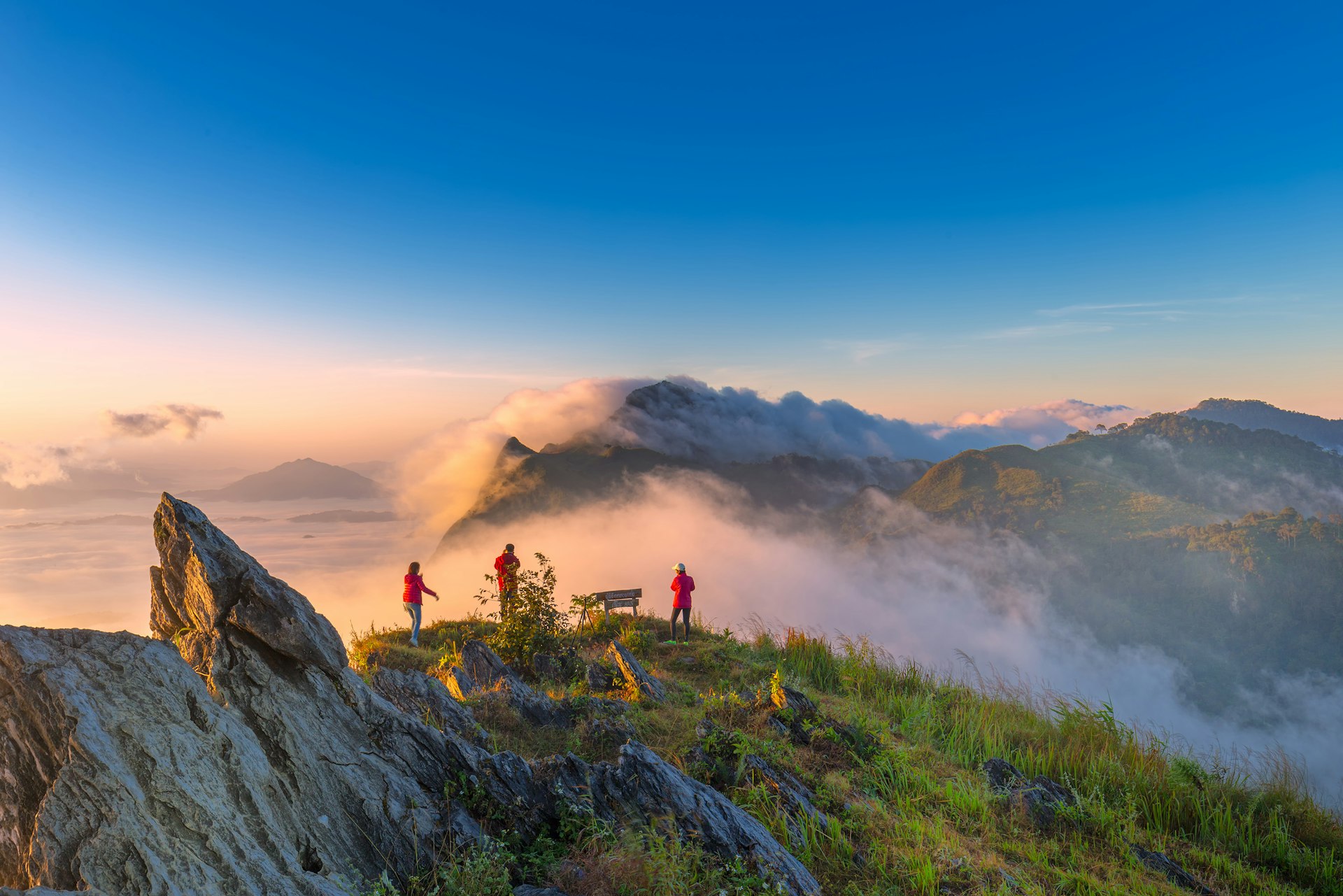
Do I need a visa to visit Thailand?
Thailand allows tourists from over 60 countries to enter without applying for a visa. Most get a 30 day stamp, which is more than enough for most holidaymakers. Trips to neighbouring countries will grant you a new 30 day stamp when you arrive back into Thailand too, making it perfect for wayfaring backpackers looking for a good place to start and end their trip.
The country’s main international airports are Suvarnabhumi Airport and Don Muang Airport in Bangkok and Phuket Airport on the island of Phuket. Smaller regional airports in Chiang Mai, Khon Kaen, Pattaya and Trang also have daily international flights from more regional Asian and Middle Eastern destinations.
What's the best way to travel around in Thailand?
Getting around Thailand is easy enough although timetables and pick-up points can be a little hard to decipher. The interprovincial bus and train networks are far-reaching and almost always have seats, but booking can be tricky thanks to a lack of any central online booking system. Agents are your best bet to sort out the details (their add-on fees are pretty nominal) or opt for flying, with dozens of internal flights connecting cities every day at prices that can’t be scoffed at.
Getting around locally is even easier with taxis, tuk-tuks and makeshift minivans and taxi-trucks in every major town and city. The more modern BTS and MRT train systems in Bangkok make navigating the massive city even easier as more lines are built, while the popular car-hailing app Grab is now top choice for locals and tourists who prefer to use map pins over hand gestures to find their way.
The best things to do in Thailand
Thailand is loosely divided into four regions, the South – where you’ll find beaches; the North, where you’ll find mountains; the Northeast – where you’ll find food and culture; and the Central Plains – where you’ll find Bangkok and Thailand’s biggest nature reserves.
Each region has its own unique cultural identity that can be experienced in everything from food to language, traditions and beliefs, but at their core all are very Thai. Here’s a small breakdown of each region to help you decide where to begin.
Bangkok
Bangkok is the heart of Thailand, home to the Royal Family and one of the world's largest capital cities. Renowned for its endless shopping, record-breaking markets and vibrant nightlife, there's something here for everyone, although it's not always everyone’s favorite place.
Because it’s the first port of call for most visitors, it can be quite an overwhelming experience for a first-timer. Endless traffic jams, strong smells from street food vendors and a pulsating hum of crowds might be an assault on the senses. Some thrive, others dive. Both are perfectly acceptable responses but if you do find yourself in the latter party, try to consider staying a day or two to settle in and see some sights.
The best way to see Bangkok is getting on the back of a tuk tuk and touring the city by way of the Grand Palace, Khao San Road, Siam Shopping District and the world’s largest Chinatown. If you’re there at the weekend, don’t forget to visit Chatuchak Weekend Market, the largest market in Thailand.
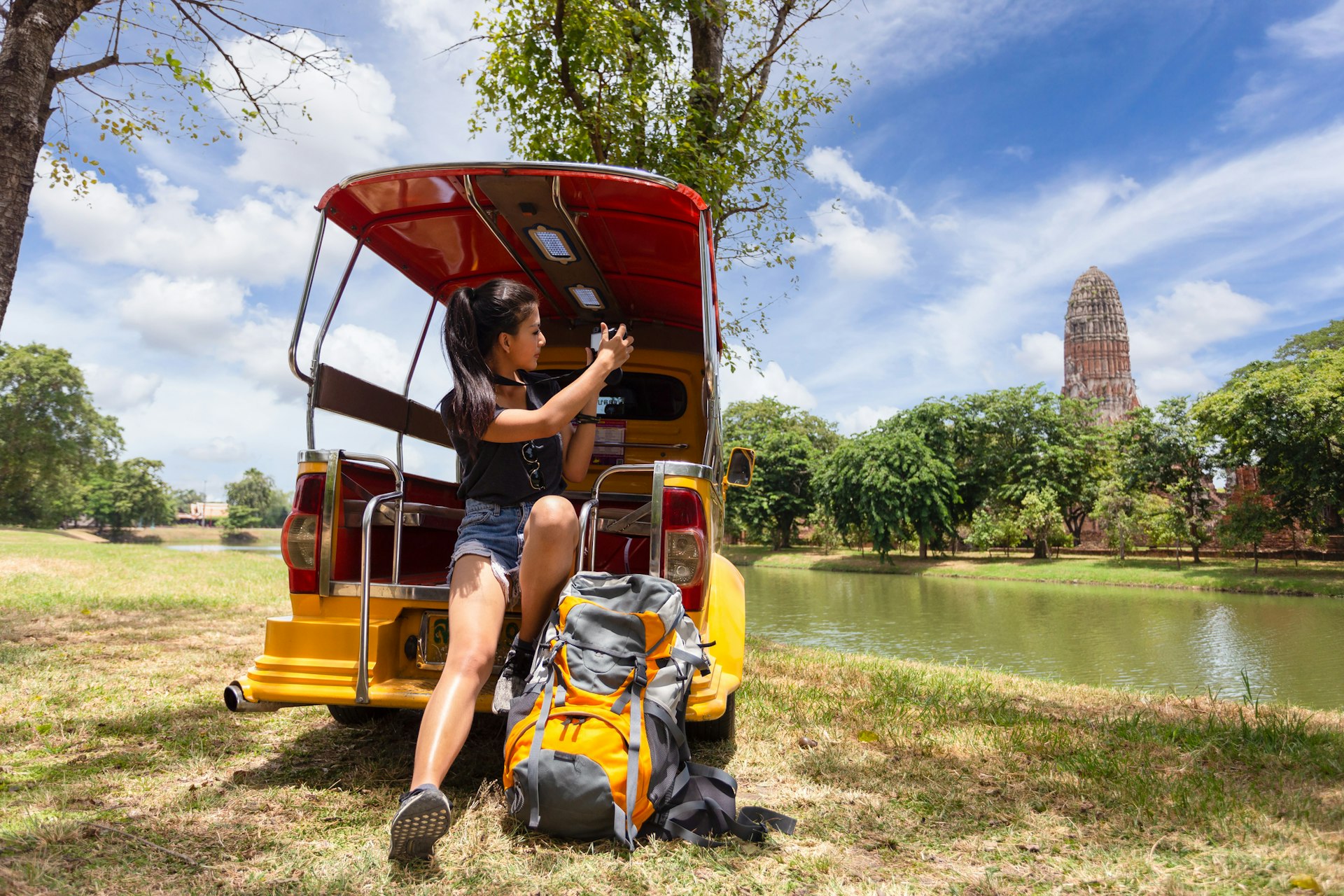
The Central Plains
Head beyond Bangkok and you’ll be greeted by a wide world of rolling green hills and small towns that are home to some of Thailand’s best kept secrets.
The ancient capital of Ayutthaya is just 90 minutes from Bangkok’s Krung Thep Aphiwat Central Terminal, and is a perfect day trip from the busy capital. Alternatively, depart on a horizontal trajectory for more natural experiences that are easy to get to, including Thailand’s largest nature reserve, Khao Yai National Park (surrounded by luxurious holiday villas and wine plantations) to the east, and the wild waterfalls and elephant sanctuaries of Kanchanaburi to the west.
The Southern Islands
The islands along the southern peninsula are Thailand’s most popular destination, and for good reason. Pristine beaches, although a little inundated with tourist development over the years, are still some of the best in the region. The Andaman Sea side offers the clearest water, best diving sites and white sand beaches, home to the infamous city-island of Phuket and many other smaller islands each with their own charm and story, one of the best being Ko Lipe. In the Bay of Thailand, you’ll find the popular full-moon party island of Ko Pha-Ngan along with many other islands that offer both relaxing getaways and unadulterated ocean fun.
Chiang Mai and the North
Chiang Mai is the hub for most travelers heading north. Once an old capital for the Lanna Kingdom, the city is rich in history and offers a glimpse into the unique cultures of hilltribes and local traditions that are unlike any other in Thailand. Surrounded by mountains, it is also a paradise for those who like adventure, with everything from white water rafting to sustainable elephant tourism, jungle treks and mountain-top glamping.
The nearby mountain town of Pai became a backpacker hotspot during the '80s and has remained one ever since. Although more family-friendly than ever, it is still the place every first-time backpacker ends up at one point or another. And while most experiences in the North are easily accessed from the hub of Chiang Mai, travelers with a little more time should venture further into the hills in search of untapped beauty found within the mountains of Nan, Chiang Rai and Mae Hong Son.
Northeast Thailand
Colloquially known as Isan (pronounced ee-saan), this region is the least visited part of Thailand. Endless paddy fields and agricultural powerhouses are what keep this region going, but for intrepid travelers there’s a fair few things to be discovered here too.
Sharing its border with Laos and Cambodia, backpackers will often find themselves in the border towns of Nong Khai and Aranyaprathet as they venture forth, or emerge from, the wider region. Beyond that, the region operates on a more destination-specific agenda, with the dinosaur museums of Khon Kaen, the plateau camping of Phu Kradeung and the rocket festivals of Yasothon being some of the region’s biggest highlights.
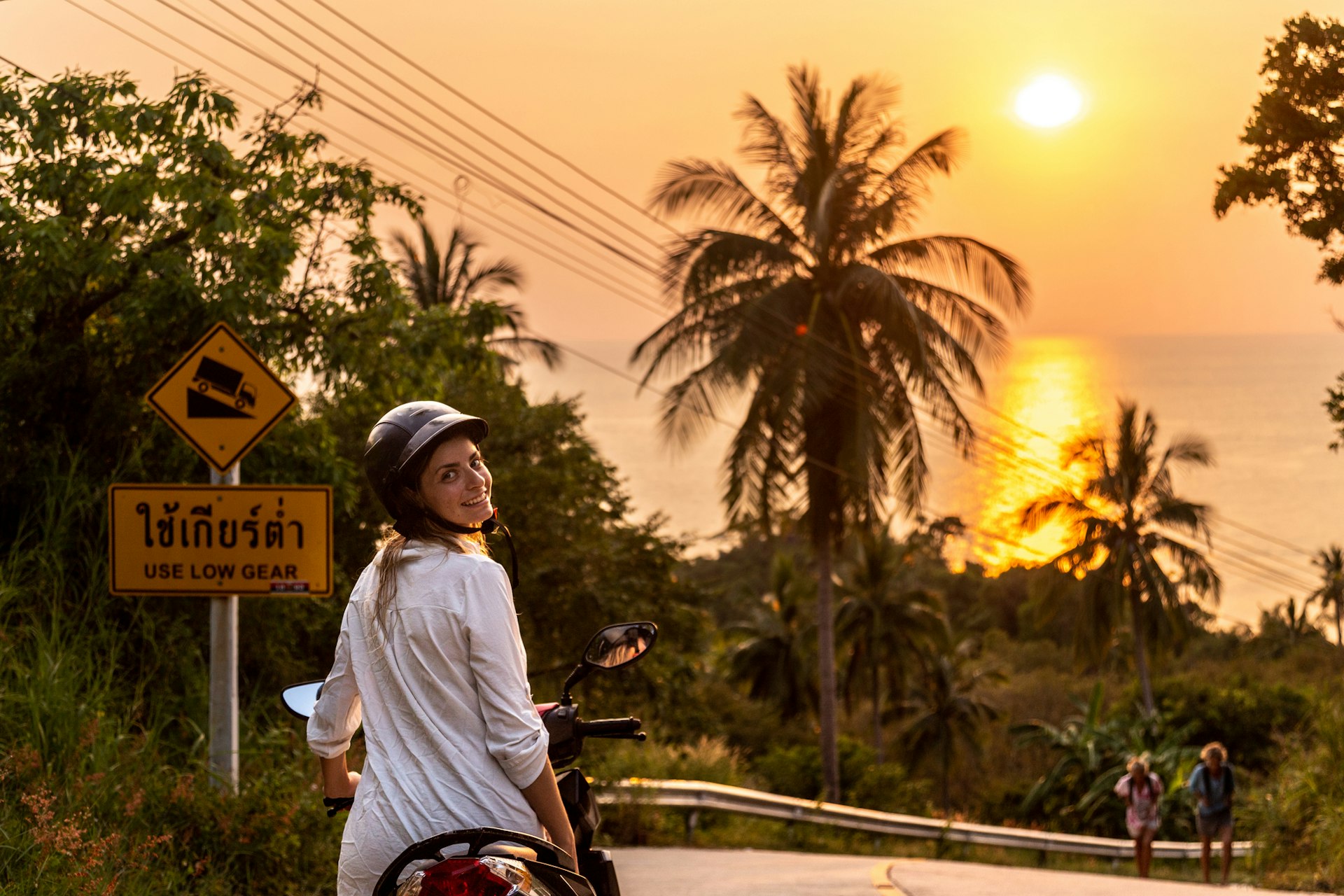
My favorite thing to do in Thailand
Northern Thailand has some of the best roads in the region for biking. Whether you hire a moped, try your skills on a vintage classic or swap a motor for two pedals, exploring the North – and Thailand in general – on two wheels is one of the most rewarding experiences.
Why? Well, with two wheels you can stop almost anywhere, change plans at a moment's notice and travel slow enough to take in your surroundings and see things often missed from inside a minivan. This not only is a great way to travel in general, but also aligns well with the more relaxed and spontaneous travel culture that Thailand is perfect for.
Whenever I visit a new city, I like to rent a bike and drive around to see what’s on offer. When I have a day or two free, I’ll take to the road on a pre-planned trip on well-known routes such as the Mae Hong Son Loop that offer more in the way of pit stops, hilltribe village detours and refreshing midday waterfall visits. If there’s one bike route you do while in Chiang Mai, it should be a trip out to Doi Inthanon (the country’s highest mountain) and back, making sure you reach the top of the mountain (a road leads all the way to the top) and book a night in one of the many luxurious dome tent glamping spots with your very own private balcony bathtub for as little as $40 just a night.
How much money do I need for Thailand?
Costs in Thailand can vary dramatically and also feel quite unbalanced at times. A local coffee can set you back as much as three street food dinners, while luxury resorts range from the surprisingly accessible to downright outrageously expensive.
One thing is for certain, Thailand is no longer a cheap destination for tourists. Sure, you can easily get by on a budget here and still experience things you could never afford back at home, but the cheap destination that generations before once knew is mostly gone. While backpacker hostels trade cheap prices with fans and unwashed sheets, tourist hot spots generally charge more but also offer better services as a result. If you want to keep it real, look beyond the flashing lights for nearby local hangouts that often serve better food and more genuine experiences.
Average costs in Thailand
- Hostel room: 300–600B
- Basic hotel room: 600–1500B
- Luxury villa: 3000–30,000B
- Interprovincial bus and train tickets: 200–600B
- Internal flight: 2000–3000B
- Bowl of noodles on the roadside: 60B
- Thai restaurant meal for two: 1500B
- A barbeque buffet: 500B
- A bottle of local beer: 60B
- A fresh cup of Thai-origin coffee: 120B
- A liter of petrol: 45B
Is Thailand safe for tourists?
Absolutely. In fact, Thailand is one of the least dangerous countries in Southeast Asia for travelers. It’s open and friendly culture means people are always willing to help you, and while there are people with bad intentions the world over, there’s usually someone nearby who can help on the rare occasion something does go wrong.
Looking at a wider picture, the country does have a history of social unrest and military coups, however these are (mostly) bloodless and tourists have never been a target of either side. As long as you follow standard travel safety practices, look out for tuk tuk scams and be savvy around corrupt vendors and officials, you’ll be fine.
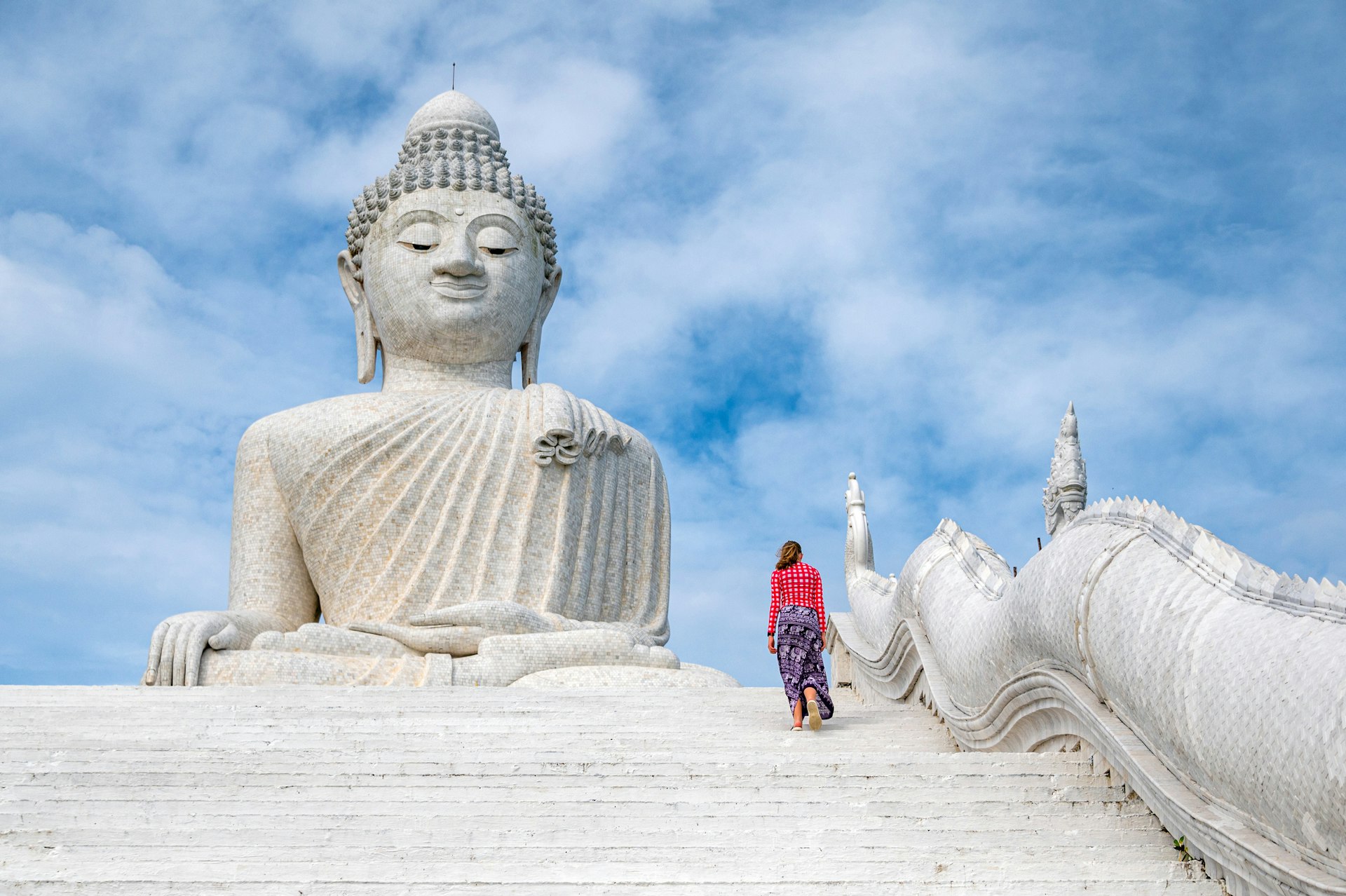
What should I know about Thai culture before I visit?
Thailand has a strong cultural identity but Thai people are generally very tolerant and accommodating to foreign tourists who may not realize they’re making a faux pas. Aside from insulting Buddhism or the monarchy (both punishable with jail terms), most other traditions or practices are overlooked if done wrong.
Generally speaking, you shouldn’t touch a stranger on the head, point at things with your feet, step over people or put your feet up on a chair. This comes from the belief that the head is the most sacred part of the body while the feet are the least. Other things include public nudity, going topless (this also includes men away from the pool or the sea), shouting loudly or getting a little too intimate in public.
However, due to the reserved nature of Thai society, it can be difficult for tourists to recognize when they’re doing something wrong as many people won’t mention it. When in doubt, smile, be polite and keep frustrations to yourself and you’ll fit in just fine.
How can I best stay connected in Thailand?
Thailand has an incredible network of wi-fi and 4G/5G networks that cover almost the entire country. Free wi-fi is available in almost every cafe, restaurant, bar and hotel and sim cards can be purchased cheap and easily (you’ll need your passport to buy one) and offer very cheap internet packages that can keep you connected with superfast 4G from sandy beaches to the most dense jungles.
Is Thai street food safe to eat?
Most street food in Thailand is cooked to order, making it especially safe to eat as it is served fresh off the wok. Just like restaurants, street vendors rely on good reviews and happy customers to survive. Food poisoning from street food is uncommon but not impossible, but for first-time visitors, a change in diet and local bacteria can result in mild upset during the first few days.
Pre-cooked food left out on the roadside for hours on end is more high-risk, so use your judgement on whether something looks safe to eat. Thai people are also very cautious when it comes to cleanliness and food quality, so if there are lots of locals lining up too, you’re definitely at a good place.
Is cannabis legal in Thailand?
As of 2018 cannabis was legalized in Thailand for medical use and more recently decriminalized for recreational use. Although there are loose rules around who can and cannot smoke (currently banned for under 20s and pregnant women), these are being updated often so make a point of seeking up-to-date information before engaging in any cannabis-related activity.
Smoking cannabis, cigarettes or vaping (e-cigarettes are illegal in Thailand) in public places is still subject to punishment as a public nuisance so watch out for no-smoking signs. Thailand also has a very strong stance against all other drugs, with hefty prison sentences and even the death penalty for those caught using or in possession. As such, the laws surrounding cannabis could change in an instant so when in doubt, avoid it to stay safe.

